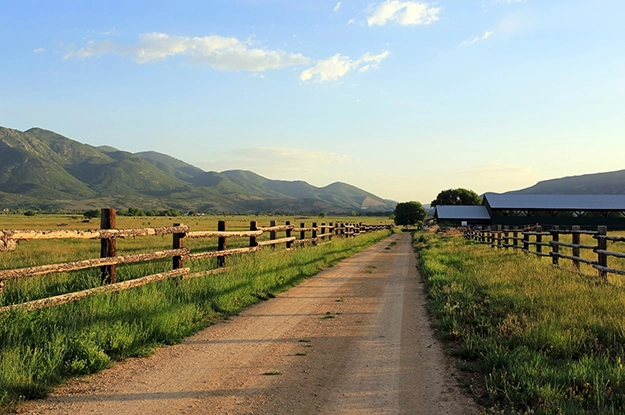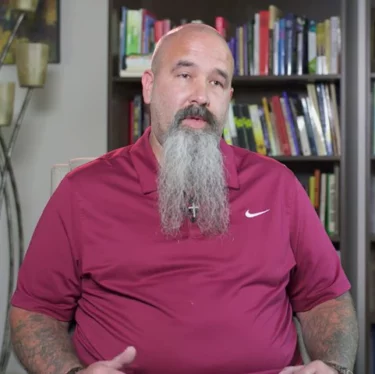If you ever heard, “You’ve seen one rural community, you’ve only seen ONE rural community,” it’s true!
I’ve traveled to countless rural, frontier and tribal communities across the country for more than 13 years and what resonated the most to me was the strength and resilience of these communities. Never have I been around such committed individuals who rally together to improve the wellbeing of their communities!
I’m not from a rural community, but I have spent many years working in and with rural health clinics, federally qualified health centers, community mental health centers, local health departments, providers and hospitals seeking to address complex health issues, including improving mental wellbeing in their community.
It’s easy to focus on the challenges that plague rural and frontier communities – having to travel great distances to access care, the unreliability of or lack of broadband connectivity and the stigma associated with seeking mental health care services in a community where everyone knows everyone and wearing multiple hats is the norm. It’s common for the mayor to be the local restaurant owner and the administrative director at the federally qualified health center.
While some challenges were similar every time I found myself in a rural, frontier or tribal community, I was reminded that the communities are not.
The Landscape
Rural, frontier and tribal communities are often excluded during the design of policies, research and programs at the federal and state level. This lack of perspective can, and does, lead to negative consequences in their health systems and overall outcomes.
Distribution of funding often demonstrates a bias toward large population centers as person-based funding does not translate into financial stability. Evidence-based models are generally designed and developed in more urban settings, yielding many challenges to maintain high fidelity when applying them in rural and frontier communities. Finally, calls for proposals that set a minimum population size requirement may eliminate rural and frontier communities from applying for much-needed funding.
As a result, rural, frontier and tribal communities often lag in meeting the health care needs of their population and experience disparate health outcomes compared to the urban communities. But, despite the inequities in distribution, the need in rural America is great. Approximately 7.7 million, or 20.5% of nonmetropolitan adults reported having any mental illness (AMI) and just under 2 million nonmetropolitan adults reported having thoughts of suicide during 2020, according to the 2020 National Survey on Drug Use and Health. The current workforce to respond to this growing demand is woefully inadequate. According to the Health Resources and Services Administration (HRSA), another 7,000 more mental health and substance use treatment professionals are needed in rural and frontier communities just to meet the need.
In addition, the National Rural Health Association suggests providing mental health and substance use treatment services can be challenging due to:
- Accessibility. Traveling long distances, knowing when and where to obtain services.
- Availability. Shortages of providers and services.
- Affordability. Costs associated with obtaining services, lack of insurance or being underinsured.
- Acceptability. Stigma of obtaining services in communities where everyone knows everyone.
Harnessing Rural Assets
Sure, there are challenges, but leveraging rural strengths is often overlooked. Rural and frontier communities are known for their tenacity and they work hard to solve their own problems, they are generally more close-knit and socially connected than larger urban environments and there is a deeper foundation of support and level of collaboration among entities to create adaptive solutions to their complex challenges. In addition, individuals in rural and frontier communities are committed to the success of their communities and exhibit strong values and connections to family, jobs and life in rural America.
The potential for innovation is ripe in rural America. One community I worked with lacked specialized mental health and substance use treatment services within a three-county region. In response to an uptick in mental health crises one summer, the local health department brought together schools, faith-based leaders, law enforcement and others to offer wrap-around services including navigation and case management for individuals with a mental health diagnosis who lacked transportation and insurance, experienced housing and food insecurities and did not have an established mental health provider. Since then, the program has expanded to medication management and home visits.
Certainly a “pull yourself up by the bootstraps” mindset exists in these communities.
The Path Forward
So, what does this mean for those of us who support and work with providers and mental health and substance use treatment centers in rural and frontier communities? What does this mean for those of us functioning in and across all the spaces in between at the state, federal and national level?
Consider these recommendations as you move forward in your work:
- Rural is not a monolith. You’ve seen one community, you’ve seen ONE community. A one-size fits all approach just doesn’t work in rural, frontier and tribal communities.
- Immerse yourself in the community itself. You will learn more than any article or report you read or meeting you attend.
- Deepen your understanding of the rural context. Learn how strengths and assets and other factors within the community are interconnected to identify creative solutions.
- Identify ways to elevate rural innovations. When you advocate to funders and policymakers, demonstrate your ability to be flexible with implementing evidence-based models.
- Consider unintended consequences. Any policy or program that is developed at the state or federal level has the potential of unintended consequences when applied to rural and frontier communities. Involve rural leaders in decision-making.
Explore the following opportunities that are available to providers and leaders in rural, frontier and tribal communities:
- Rural Communities Opioid Response can improve access to and quality of substance use disorder and other mental health care services in rural communities. Upgrading rural mental health and substance use treatment may include increasing access to preventative care, treatment and recovery services.
- Indian Health Service Loan Repayment Program offers to repay educational loans (up to $40,000 in exchange for an initial two-year service commitment) for eligible health professionals to help meet your staffing needs.
- Youth Homeless Demonstration Program Community Selection selects a minimum of eight rural communities to develop and implement a coordinated community approach to end homelessness through the U.S. Department of Housing and Urban Development.
- Rural Surface Transportation Grant Program improves and expands the surface transportation infrastructure in rural areas to increase connectivity and improve quality of life by improving access to emergency care, essential services, health care providers or drug and alcohol treatment and rehabilitation centers.
- Adult Drug Court Discretionary Grant Program enhances the operation of adult drug courts, including integrating evidence-based substance use treatment, random drug testing, equitable sanctions and incentives and transitional services in judicially-supervised court settings with jurisdiction over offenders to reduce recidivism, substance abuse and prevent overdoses.
In addition, you can leverage existing National Council rural offerings including:
- Peer-to-peer learning online. Join the new Rural Health Interest Group, a digital community designed to help address your unique challenges through peer engagement and shared learning. Anyone in your organization can join! Explore solutions to challenges prevalent in rural, frontier and tribal communities; discover new approaches to treatment; participate in virtual learning events with health care experts; network with colleagues from across the country; download and share resources … and more!
Let’s all commit to deepening our understanding of and appreciation for rural, frontier and tribal mental health and substance use treatment providers and organizations and collectively work towards improving outcomes for all!
Guest Author
Director of Practice Improvement & Consulting
National Council for Mental Wellbeing




